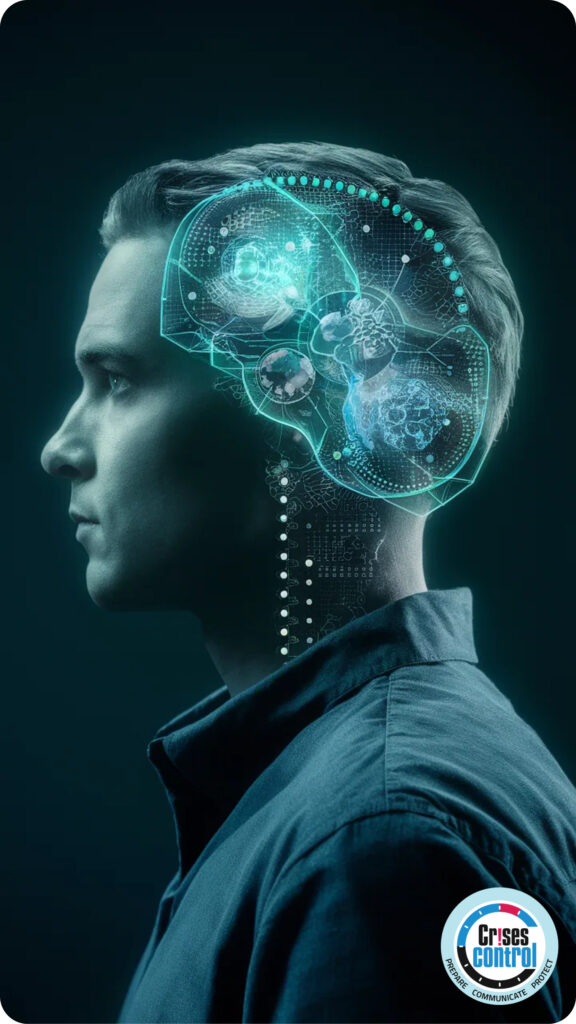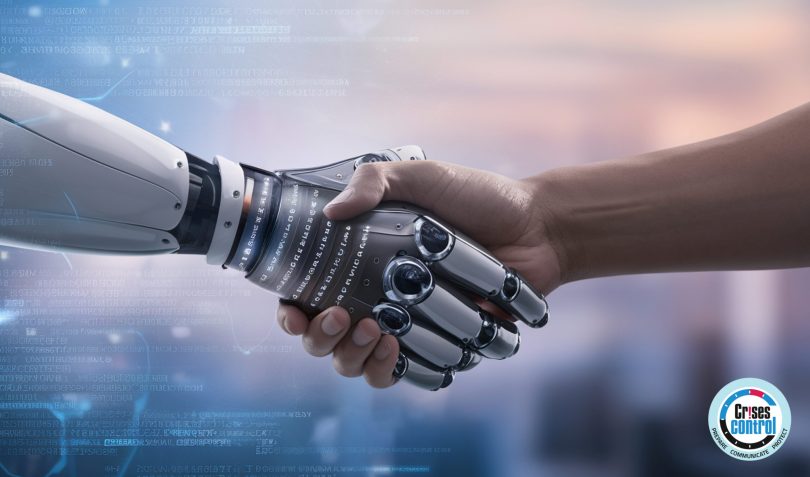Written by Shalen Sehgal | CEO
Crises come in all shapes and sizes: natural disasters, cyberattacks, product recalls. No matter the threat, effective communication is the key to mitigating damage and ensuring business continuity.
Traditionally, crisis management relied on pre-defined communication plans and reactive measures. However, the rise of Artificial Intelligence (AI) has ushered in a new era of proactive crisis response. AI-powered mass notification systems are transforming the way organisations communicate during critical events, enabling them to reach the right people, with the right information, at the right time.
This blog delves into the power of AI in mass notification, exploring how it can significantly enhance your crisis management strategy.
Beyond the Template: AI-driven Personalisation in Mass Notifications
One of the biggest limitations of traditional mass notification systems is their reliance on generic templates. These one-size-fits-all messages often fail to resonate with recipients, leading to confusion and inaction. AI, however, empowers organisations to deliver targeted and personalised messages.
Here’s how AI personalised mass notifications:

- Contextual Awareness: AI can analyse real-time data to understand the specific context of a crisis. This includes factors like location, department, and employee role. By tailoring messages to this context, organisations provide recipients with the most relevant and actionable information.
- Dynamic Content: AI can dynamically insert specific details into notification templates, such as evacuation routes for particular buildings or safety instructions for various departments. This ensures recipients receive clear and concise guidance relevant to their immediate situation.
- Language Processing: AI-powered language processing can translate messages into multiple languages in real-time, ensuring everyone receives critical information regardless of their language proficiency. This is crucial in a diverse workforce or during a global crisis.
The benefits of personalised notifications are undeniable. Studies have shown that targeted messages are more likely to be opened, read, and acted upon. This translates to faster response times, improved decision-making, and ultimately, a more effective crisis response.
From Reactive to Predictive: AI-powered Early Warning Systems
Crisis management isn’t just about reacting to events; it’s also about anticipating them. AI algorithms can analyse vast amounts of data from various sources, including weather patterns, social media sentiment, and security feeds. By identifying patterns and anomalies, AI can predict potential threats before they escalate into a full-blown crisis.
Here’s how AI enables proactive crisis management:
- Risk Identification: AI can continuously monitor internal and external data points to identify potential threats. This includes analysing weather forecasts, social media for mentions of disruptions, and security logs for suspicious activity.
- Predictive Analytics: AI can analyse historical data to predict the likelihood and potential impact of various crisis scenarios. This allows organisations to proactively develop contingency plans and allocate resources before a crisis hits.
- Early Warning Systems: Based on risk identification and predictive analytics, AI can trigger automated early warning systems. These systems can send alerts to relevant personnel, allowing them to take preventative measures and mitigate the impact of an impending crisis.
The ability to anticipate threats allows organisations to move from reactive to proactive crisis management. This proactive approach minimises damage, protects lives and property, and ensures business continuity.
AI and Crisis Communication: Ensuring Transparency and Trust
Effective crisis communication is essential for managing public perception and maintaining trust during an emergency. AI can significantly enhance communication efforts by providing real-time insights and facilitating efficient information dissemination.
Here’s how AI can revolutionise crisis communication:
- Sentiment Analysis: AI can analyse social media conversations and news reports to gauge public sentiment towards a crisis. This allows organisations to tailor their messaging to address public concerns and maintain a positive brand image.
- Real-time Updates: AI can automate the delivery of real-time updates on the evolving situation. This ensures that all stakeholders, from employees to customers, have access to the latest information, fostering trust and reducing anxiety.
- Chatbots and Virtual Assistants: AI-powered chatbots and virtual assistants can provide immediate support and answer frequently asked questions during a crisis. This frees up human resources to focus on critical tasks while ensuring all inquiries are addressed.
By providing transparent and consistent communication throughout a crisis, organisations can maintain trust with stakeholders and minimise reputational damage.
The Future of Crisis Management: A Symbiotic Relationship Between Humans and AI
AI is not a replacement for human expertise in crisis management. Instead, it is a powerful tool that can augment human capabilities and decision-making. The ideal crisis management strategy leverages the strengths of both humans and AI.
Here’s how humans and AI can work together:
- Human Oversight: While AI can automate many tasks, human oversight remains crucial. Humans provide expertise, empathy, and critical thinking skills that are essential for navigating complex crisis scenarios. AI can analyse data and identify potential threats, but it’s humans who ultimately decide on the course of action. Human judgement is necessary for making nuanced decisions that consider ethical implications and the emotional well-being of stakeholders.
- Continuous Learning: AI is a powerful tool, but it’s important to remember that it’s only as good as the data it’s trained on. Humans play a vital role in ensuring that AI systems are continuously learning and evolving. This includes providing feedback on AI-generated insights and monitoring the system’s performance over time.

Building a Crisis Management Strategy with AI
Integrating AI into your crisis management strategy requires careful planning and consideration. Here are some key steps to get you started:
- Identify Your Needs: The first step is to identify your specific needs and vulnerabilities. What types of crises are you most likely to face? What are your current communication challenges? By understanding your unique situation, you can select AI tools that best address your specific requirements.
- Invest in Training: AI is a powerful tool, but it requires proper training to function effectively. Invest in training your team on how to utilise the AI features of your chosen mass notification system. This ensures they can leverage the technology to its full potential during a crisis.
- Data is King: The effectiveness of AI is heavily reliant on data quality. Ensure you have a robust data collection and management system in place. This includes employee contact information, departmental structures, and any other relevant data that can be used to personalise notifications and trigger early warnings.
- Testing and Refinement: Don’t wait for a real crisis to test your AI-powered system. Regularly conduct drills and simulations to ensure your communication plans and technology work seamlessly. Use these tests to identify areas for improvement and refine your strategy over time.
Conclusion
At Crises Control, we understand the critical role that AI will play in modern crisis management. While our current suite of mass notification solutions doesn’t utilise AI yet, we’re actively developing and integrating this powerful technology into our software. Our commitment to innovation ensures you’ll have access to cutting-edge AI features as soon as they become available.
Our team of experts can help you develop a future-proof crisis management strategy that integrates seamlessly with AI once it’s implemented. We’ll guide you through the process of identifying your needs, collecting the right data, and preparing your team to leverage the power of AI for effective crisis communication.
Contact us today to discuss your current crisis management needs and learn how our solutions can prepare you for the future of AI-powered response.
Request a FREE Demo

